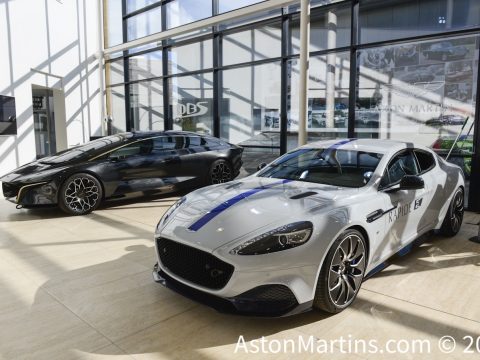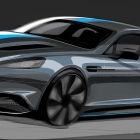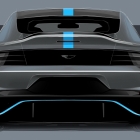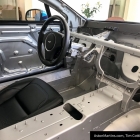The official partnership between Chinese tech company LeEco (formerly LeTV) and exciting electric-car startup Faraday Future was signed early in 2016. At the time, Faraday Future had created a Variable Platform Architecture, a modular electric vehicle platform said to underpin many different types of vehicles, from compacts to SUVs to sports cars. This would have been a brilliant boost for the RapidE project except that the following year, LeEco faced huge financial problems and the project reverted to the original collaboration.
Thus, Rapide E saw a continuation of the collaboration with Williams Advanced Engineering (an off shoot of Williams F1) who worked on the original RapidE Concept. Based in Grove near Wantage, Oxfordshire, Williams Advanced Engineering were assisting AML with the complex task of engineering integration: an ideal partner as they had already designed and assembled a battery system for the 42 cars that compete in the FIA Formula E Championship.
Based on the final version of the Rapide, the Rapide AMR, Rapide E promised to deliver four-door sports car looks and dynamics of the Rapide S powered by an all-electric powertrain replacing the 5.9 litre V12 engine.
By 2017, the production run of 155 cars were scheduled to be built at the new Aston Martin facility at St Athan in South Wales in 2019 although more technical details were still sketchy.
By the spring of 2019, the production ready car was finally shown, initially at the Shanghai Motor Show and then demonstrated at both the Monaco Grand Prix and Goodwood Festival of Speed. Journalists and VIPs were entertained with hot passenger laps chauffeured by AM Works and factory development driver, Darren Turner. More details were made available and AML were actively looking for customers. The car was made super slippery with 8% less drag than the Rapide AMR. It had advanced 800 volt architecture and with 602 bhp from its twin rear motors, sufficient power to reach 155 mph and 0-60 mph in under 4 seconds. This was a mighty quick car with real potential.
Yet for reasons that have not yet become apparent, production was cancelled sometime in late 2019 although active speculation of this didn’t surface until January of 2020. Maybe it was simply that the focus for Aston Martin had to be the vitally important DBX model; any side projects had become a possible distraction.
After the production plans was cancelled, the Rapide E became an electrification research project, simply a glimpse into the future. There were at the time, no further plans for a production electric Aston Martin although it will undoubtedly happen in time as the EU and UK look to end the sale of cars with an internal combustion engine by 2035. The first mild-hybrid Aston Martin was the Chinese market only DBX Straight Six.























